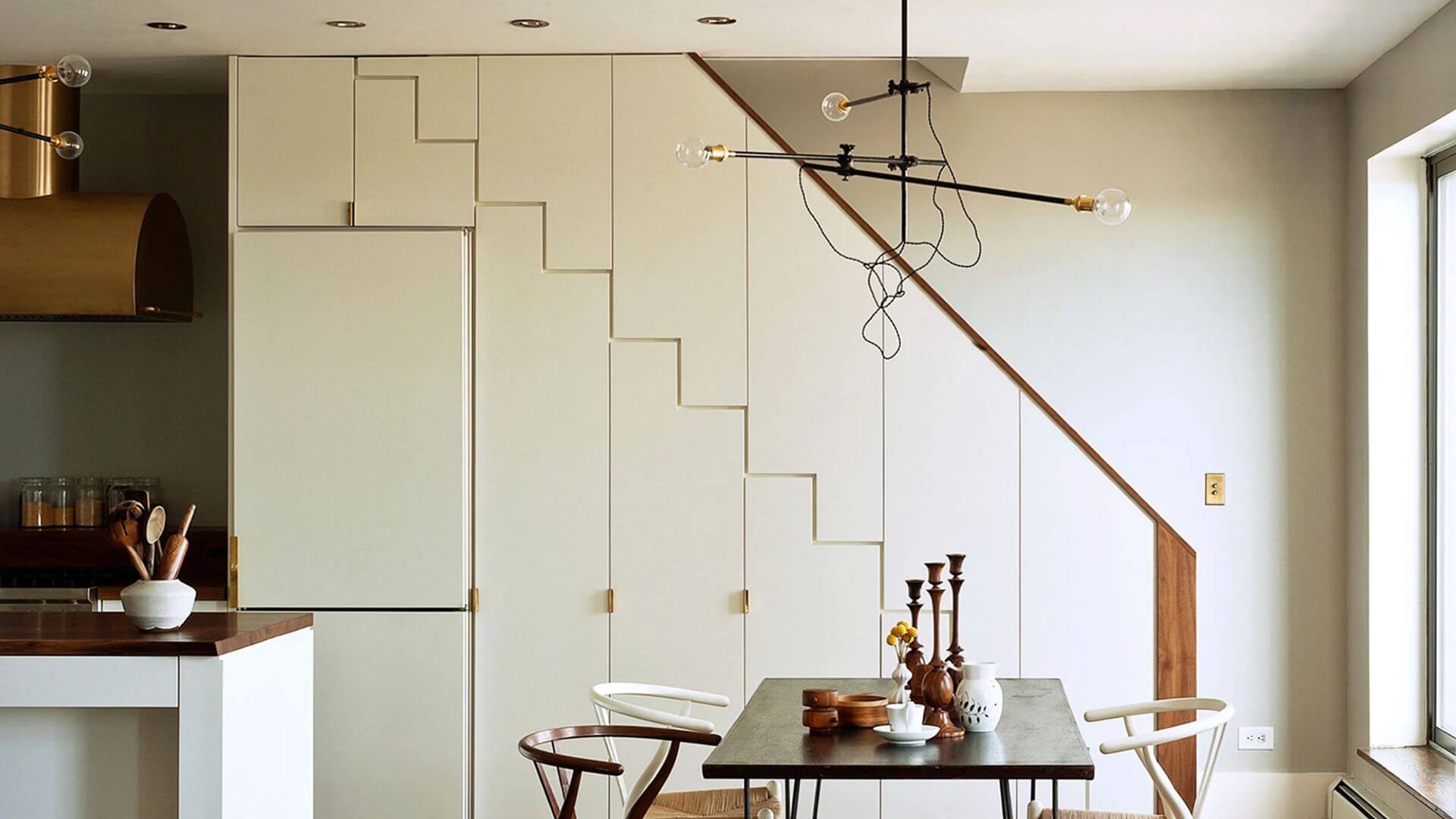As our cities expand, the urgency of our environmental issues becomes more noticeable. However, sustainable architecture emerges as a beacon of hope, offering designs that blend with nature, minimize waste, and foster healthier lifestyles. Envision a future where our homes are not just gorgeous, but also functional and environmentally friendly. This can be a tangible reality that we, as individuals and communities, can help bring about.
Read on to discover how sustainable architecture transforms our cities into greener, healthier living places.
What is Sustainable Architecture?
Sustainable architecture is not just about creating environmentally responsible and resource-efficient buildings. It's a comprehensive approach that considers every stage of a building's lifecycle, from construction and operation to maintenance and even demolition.
This approach ensures that every part of the building is designed with sustainability, minimizing its environmental impact from the beginning.
Examples of Sustainable Architecture
Here are some examples of sustainable architecture showcasing innovative design and eco-friendly practices. These buildings serve as models for integrating sustainability into urban environments:
1. The Bullitt Center, Seattle, Washington: Known as one of the greenest commercial buildings in the world, the Bullitt Center features a rooftop solar array, rainwater harvesting system, and composting toilets. The building also includes advanced features like a greywater treatment system, radiant heating, and a regenerative elevator. Its design emphasizes walkability, bicycle services, and non-toxic materials. This building is a benchmark for sustainability, demonstrating how eco-friendly elements can be integrated into urban architecture to reduce environmental impact significantly.
2. The Edge, Amsterdam, Netherlands: Renowned for its smart building systems and renewable energy integration, The Edge uses an advanced network of sensors and automation to optimize energy efficiency and occupant comfort. The building's innovative design includes solar panels, a highly efficient energy management system, and even a smart app for employees to control their work environment. Additionally, it features a state-of-the-art atrium that maximizes natural light and ventilation, making it a model for sustainable office buildings.
3. One Central Park, Sydney, Australia: This residential building is famous for its vertical gardens, which improve air quality and provide insulation, reducing the need for heating and cooling. Central Park boasts a low-carbon tri-generation power plant, producing thermal energy for residents and businesses. It also has the world's largest membrane bioreactor for water recycling, servicing thousands of residents and visitors. This building exemplifies how green architecture can enhance urban living spaces with its blend of sustainability and aesthetic appeal.
Key Concepts and Principles
Sustainable architecture revolves around three main principles: energy efficiency, resource management, and minimal environmental impact.
Energy efficiency involves designing buildings to use less energy for heating, cooling, lighting, and other functions. This can be achieved through advanced insulation, high-performance windows, and solar panels. By reducing energy consumption, these buildings not only save money but also help to reduce greenhouse gas emissions.
Resource management in sustainable architecture means using sustainable, recyclable, or renewable materials. It also involves sourcing these materials responsibly to ensure minimal environmental impact. For example, reclaimed wood or recycled metal reduces the need for new raw materials and the energy required to produce them.
Minimal environmental impact refers to designing buildings that blend seamlessly with their natural surroundings, causing as little disruption as possible. This includes preserving natural landscapes, reducing waste, and ensuring the building's operation generates minimal pollution.
Difference Between Sustainable and Traditional Architecture
While traditional architecture often prioritizes aesthetic appeal and cost, sustainable architecture takes a more holistic approach, integrating environmental considerations at every stage.
Design approaches in sustainable architecture focus on creating energy-efficient and eco-friendly buildings. For instance, passive solar design uses the building's orientation and windows to maximize natural light and heat, reducing the need for electrical lighting and heating.
Material selection is another critical difference. Sustainable architecture favors durable, non-toxic, and sustainably sourced materials. Traditional architecture might opt for cheaper, readily available materials without considering their environmental impact.
Lifecycle assessment is a method used in sustainable architecture to evaluate a building's environmental impact throughout its lifecycle. This comprehensive approach helps understand and mitigate the long-term effects of construction and operation on the environment.
Benefits of Sustainable Architecture
Sustainable architecture offers a multitude of benefits that extend beyond just environmental impact.
Environmental Benefits: Sustainable buildings help decrease greenhouse gas emissions and conserve natural resources by reducing energy consumption and utilizing renewable resources. Green roofs and walls, for instance, can improve air quality and provide insulation, reducing the need for heating and cooling.
Economic Benefits: While the initial investment in sustainable materials and technologies may seem higher, the long-term savings are significant. Energy-efficient buildings lower utility bills and maintenance costs, and sustainable buildings often enjoy higher property values and occupancy rates. This benefits the environment and your pocket, making sustainable architecture a smart and financially sound choice.
Social Benefits: Sustainable architecture promotes healthier living environments. Buildings designed with good ventilation, natural light, and non-toxic materials contribute to the well-being of their occupants. Additionally, green spaces integrated into urban designs enhance community well-being and encourage social interaction.
If you're looking for professionals to implement these sustainable practices, Cypress EI, experts in sustainable development, can help you maximize the economic, social, and environmental benefits of your project, ensuring efficient and impactful results.
Critical Elements of Green Architecture
Sustainable architecture, or what others call "green architecture," is built on energy-efficient design, sustainable materials, water conservation, and waste reduction. These elements work together to create environmentally friendly, resource-efficient, and healthy buildings for occupants.
Energy-Efficient Design
Energy efficiency is a foundation of green architecture. It involves designing buildings to minimize energy consumption while maximizing comfort and functionality.
Passive Solar Design is one of the most effective strategies in energy-efficient design. This approach uses the building's orientation and windows to maximize natural sunlight and heat, reducing the need for electrical lighting and heating. For instance, large windows facing south (in the Northern Hemisphere) allow maximum sunlight during winter, while overhangs and shades can block excess heat in the summer. This design strategy can significantly reduce a building's need for energy, lowering utility bills and a smaller carbon footprint.
Insulation and ventilation play an important role in maintaining energy efficiency. An excellent-quality insulation reduces the need for cooling and heating by keeping indoor temperatures stable. Proper ventilation ensures air circulates throughout the building without losing heat or cool air.
Sustainable Materials
The choice of materials is another critical element of green architecture. Sustainable materials have a minimal environmental impact, both in terms of production and end-of-life disposal.
Recycled and renewable materials are preferred in green architecture. For instance, reclaimed wood or recycled metal can decrease the demand for new materials and lower a building's environmental footprint. Bamboo and cork are renewable materials that can be replenished quickly and are often more environmentally friendly. These materials offer many benefits, such as high durability, low embodied energy, and low toxicity, making them ideal for sustainable building design.
Non-toxic and low-emission products are essential for maintaining healthy indoor air quality. These products do not release dangerous chemicals into the air, ensuring that occupants are not exposed to pollutants that can cause health problems. Paints, adhesives, and finishes used in green buildings are preferred for their low volatile organic compound (VOC) content. Additionally, incorporating Shaker furniture or any Amish made furniture, known for its use of sustainable materials and low-VOC finishes, can further enhance the sustainability and healthfulness of indoor environments.
Water Conservation
Efficient use of water resources is another crucial aspect of green architecture. Water conservation strategies help reduce a building's overall water consumption, preserving this precious resource.
Rainwater harvesting systems are a common water conservation strategy in green architecture. They collect and store rainwater for laundry, irrigation, and flushing toilets. This method reduces the demand for municipal water supplies and helps manage stormwater runoff that can cause flooding and water pollution. Other water conservation strategies in green architecture include using efficient plumbing fixtures, such as low-flow toilets and faucets, and designing water-efficient landscapes that require minimal irrigation.
Efficient plumbing fixtures are designed to use less water without sacrificing performance. Low-flow toilets, faucets, and showerheads can significantly reduce building water usage, contributing to conservation efforts.
Waste Reduction
Minimizing waste is a crucial element of green architecture. By managing construction waste and promoting recycling and reuse, green buildings can significantly reduce their environmental impact.
Construction waste management involves careful planning to minimize waste generated during the building process. This includes using prefabricated components to reduce on-site waste and implementing strict waste sorting and recycling protocols on construction sites.
Recycling and reusing materials is another important strategy. By repurposing materials from old buildings or using recycled content in new construction, architects can reduce waste sent to landfills.
The Role of Technology in Sustainable Architecture
Technology is the main factor in advancing sustainable architecture, bringing innovative solutions that make buildings more efficient, eco-friendly, and responsive to their environments. Let's analyze some technological advancements driving this transformation.
Innovative Technologies
Incorporating cutting-edge technology into building design and operation is essential for achieving sustainability goals.
Smart building systems use automation and sensors to control lighting, heating, cooling, and security. For instance, smart thermostats adjust the temperature based on occupancy patterns, reducing energy consumption. Automated lighting systems can dim or turn off lights when rooms are unoccupied, further enhancing energy efficiency.
Renewable energy integration is another significant aspect of sustainable architecture. Buildings installed with solar panels, wind turbines, or geothermal systems can generate their energy, reducing reliance on fossil fuels. These renewable energy sources lower utility costs and decrease the building's carbon footprint. For example, integrating solar panels into a building's design can provide a substantial portion of its energy needs, especially in sunny climates.
Data-Driven Design
Data and advanced analytics are transforming how buildings are designed and operated.
Big data and AI in planning allow architects and engineers to make more informed decisions. By analyzing amounts of data on weather patterns, energy consumption, and occupant behavior, they can optimize building designs for maximum efficiency and comfort. AI can simulate various scenarios, helping identify the most sustainable and cost-effective solutions before construction begins.
Performance monitoring and optimization involve tracking a building's energy use and environmental impact. Smart meters and sensors collect real-time data on energy consumption, water use, and indoor air quality. This information can be analyzed to identify areas where efficiency can be improved. For instance, if a building's energy use spikes unexpectedly, the data can help pinpoint the cause and suggest corrective actions, ensuring that the building operates at peak efficiency.
Building a Sustainable Future
Sustainable architecture is not just today's craze; it's a necessity for the future of our urban environments. By integrating energy efficiency principles, resource management, and minimal environmental impact, we can create functional and kind buildings for our planet. The benefits are clear—environmentally, economically, and socially.





